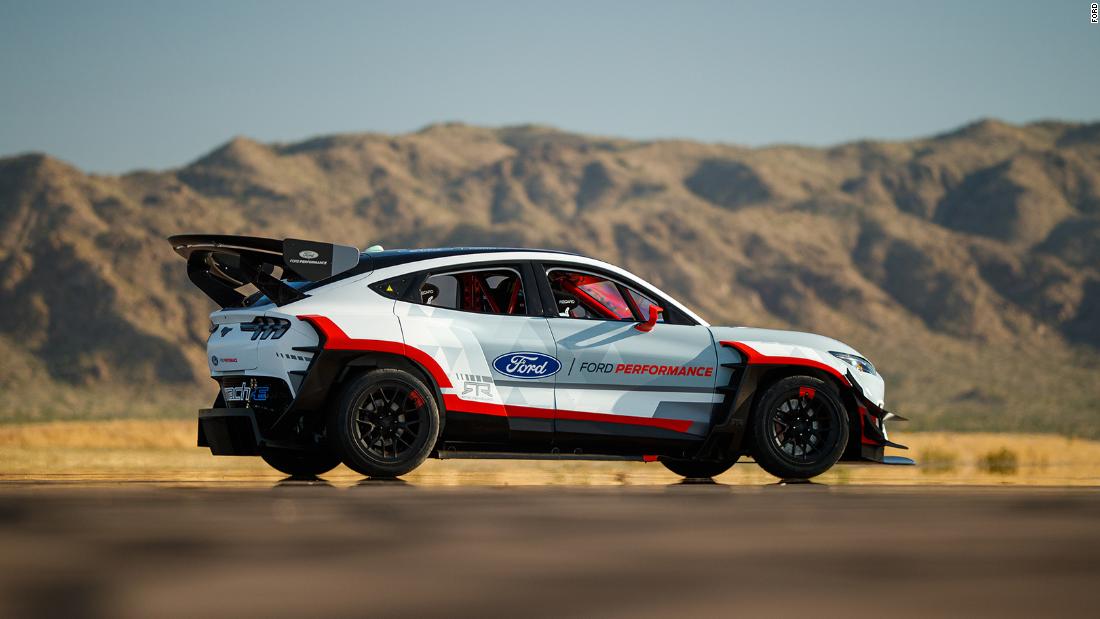
The Mach-E 1400 was created by Ford Performance in collaboration with RTR Vehicles, a company founded by drift racing driver Vaughn Gittin, Jr. Drift racing involves sliding cars sideways through the curves of a race track. Racing and driver control and driving style is more strongly rewarded than lap time. RTR specializes in parts and customization for Ford cars and trucks.
“We come together on this project, bringing in many ideas from different sources and developing it into what it is,” said Rushbrook. “Building about Vaughn’s original idea of what he would like to do for an electric drift car and make him this extreme and versatile athlete for road racing and endurance racing and everything in between. “
Ford also worked with other external partners, as well as Ford’s in-house electric vehicle development group, Team Edison, to design the Mach-E 1400, Rushbrook said.
The Mach-E 1400 has three electric motors that drive the front wheels and four more that drive the rear wheels. Power can be sent to all four wheels, only the front wheels, only the rear, or it can be divided between the front and rear wheels in any ratio.
In addition to the regular regenerative brakes that most electric cars have: These are brakes that can generate power to recharge the batteries while the car slows down – the Mach-E 1400 also has a hydraulic handbrake that can stop only the rear wheels for turns and tricks.
Despite the external resemblance, few parts of the production version of the Mach-E appear in this car. This Mach-E 1400 has a specially designed chassis, and almost all the mechanical components are exclusive to this car. Most of the body is made of carbon fiber, and the hood is made of organic composite fibers, a lower-cost alternative to carbon fiber.
The SUV has a 57 kilowatt-hour battery pack, which is smaller than the standard 76 kWh package in the Mustang Mach-E production model. The batteries are specifically designed for fast power output. The driving range is not a problem for a track vehicle like the Mach-E 1400. It only has to run for about an hour at a time to show off its tire smoking capabilities and maybe go for some vertigo-inducing rides. (It has capacity for four people). The batteries can then be recharged to 80% of their capacity in 30 minutes.
Last April, Ford introduced the 1,400-horsepower Mustang Cobra Jet 1400. Despite having the same power output, the rear-wheel drive Cobra Jet and Mach-E do not share much of the same engineering, Rushbrook said. The two high-voltage vehicles were developed separately so that engineers can learn new things from each program, he said.
So far, engineers have already discovered ways to improve braking, electrical controls and battery chemistry, Rushbrook said.
“The Mustang Mach-E GT, like a street car, will have incredible performance,” he said. “But we are learning even more, beyond that, that it is getting back to the core of the business.”
.